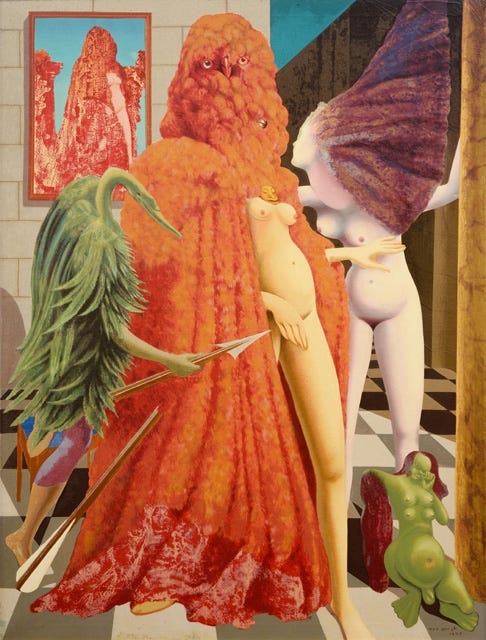Max Ernst, “The Robing of the Bride”
A look at the surrealist artist, Max Ernst, “The Robing of the Bride.”
Max Ernst was born in Germany in 1891 where he had a knack for all things creative. He was a part of the Dada group before WWI. He was born in Germany, served in WW1 from 1914 to 1918. In his biography, he said that he died in 1914 August and was resurrected in November of 1918, the end of WWI was declared. Frottage, Decalcomania, and Collage are techniques that were used by Max Ernst. Leonora Carrington's, Max Ernst’s one-time lover, alter ego was a white horse. His alter ego was a bird named Loplop. Max Ernst’s work is filled with birds, and that was based on an early childhood event and that's the source of his alter ego.
“The Robing of the Bride” from 1939 is an oil painting on wood. There's a female nude, wearing a birds head and a red feather cape. She is the bride and she’s getting ready for her big day. However, something strange is happening. She is being surrounded by these unusual creature. Then we have a veil-like figure with the long-headed bird, and then placed a sword and another female figure back here. It looks like a distended belly or pregnant with a four-breasted figure and legs. He's recalling from the Great Northern Renaissance painter Matthias Groeneveld. There has shown tradition called St. Anthony's fire, and here of this figure imagines his torments as monsters tormenting St. Anthony.
I really hope you enjoyed this quick analysis. Max Ernst was a great contributor to the Surrealist art movement. Until next time my friends.
-Monee’ B.
Yo! What’s Up… is supported by all of you readers so thank you so much for reading! Please like and share. And if you want to support my writing and research you can donate $5 through Venmo @monee-broadnax. Thank you for reading! Until next time!





